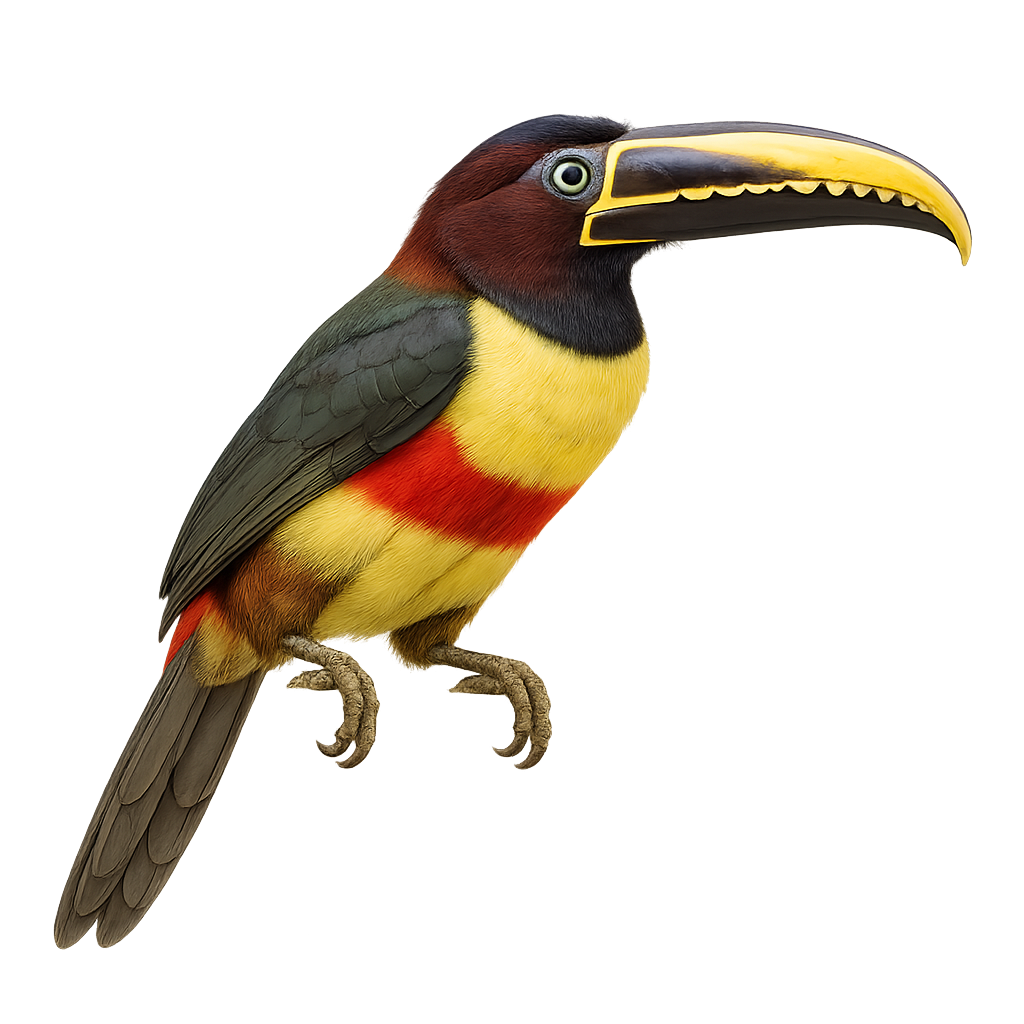Your wildlife photography guide.
Explore the collared aracari in detail, study its behavior, prepare your shots.
Where to observe and photograph the collared aracari in the wild
Learn where and when to spot the collared aracari in the wild, how to identify the species based on distinctive features, and what natural environments it inhabits. The WildlifePhotographer app offers tailored photography tips that reflect the collared aracari’s behavior, helping you capture better wildlife images. Explore the full species profile for key information including description, habitat, active periods, and approach techniques.
Collared Aracari
Scientific name: Pteroglossus aracari

IUCN Status: Least Concern
Family: RAMPHASTIDAE
Group: Birds
Sensitivity to human approach: Tolerant
Minimum approach distance: 10 m
Courtship display: October to December
Incubation: 15-17 jours
Hatchings: October to January
Habitat:
Tropical rainforests, forest edges, wooded areas
Activity period :
Primarily active during the day, with peak activity in the morning and late afternoon.
Identification and description:
The Collared Aracari is a colorful bird from the toucan family, recognizable by its long, curved beak adorned with distinctive patterns. It features primarily black plumage with a red chest band and a bright yellow belly. This bird measures about 40 to 45 cm in length and weighs between 190 and 275 grams. It inhabits the tropical rainforests of Central and South America, feeding on fruits, insects, and occasionally small vertebrates. Sociable by nature, it often moves in small family groups. Although relatively common, deforestation poses a threat to its natural habitat.
Recommended lens:
400mm – adjust based on distance, desired framing (portrait or habitat), and approach conditions.
Photography tips:
To photograph the Collared Aracari, it's advisable to use a 400mm or longer telephoto lens to capture the details of its colorful plumage without disturbing it. Look for it in tropical rainforests, often in small groups. Be patient and wait for it to perch on an open branch. The natural light of the morning or afternoon is ideal to highlight the bright colors of its plumage. Use a tripod to stabilize your camera and achieve sharp images.
The WildlifePhotographer App is coming soon!
Be the first to explore the best nature spots, track rutting seasons, log your observations, and observe more wildlife.
Already 1 431 wildlife lovers subscribed worldwide

